Types of Roofs
Welcome to our comprehensive guide to the different types of roofs available for your dream home. When it comes to building a new home or re-roofing an existing one, choosing the right roofing material is crucial. With a variety of options available, it can be challenging to determine which one is right for your home. This guide will explore different types of roof materials based on aesthetics, durability, and cost. Whether you’re looking for traditional or modern roofing materials, we’ve got you covered. Read on to discover the different types of roofs and materials that will make your dream home come to life.
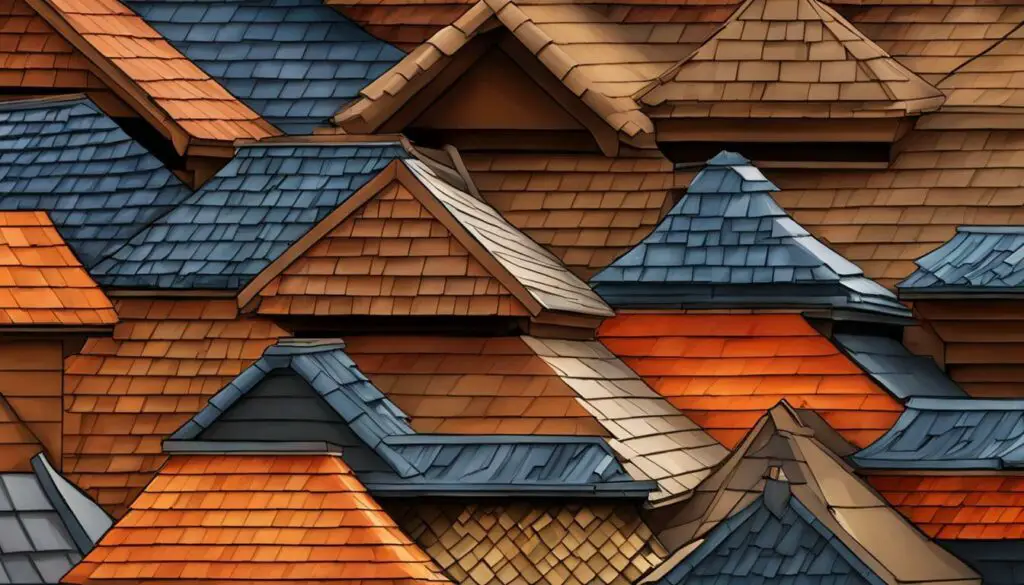
From asphalt shingles to wood shingles and shakes, clay and concrete tiles to rubber, composite, and metal roofing, we will discuss the different types of roofs and materials suitable for your home. With our guide, you will be able to make an informed decision about the best type of roofing for your specific needs. So, whether you’re looking for durability, energy efficiency, or aesthetic appeal, we’ll help you find the perfect roofing solution.
Keep reading to learn about different types of roofs and materials to make an informed decision for your dream home.
Asphalt & Asphalt Fiberglass Shingles
If you are looking for a cost-effective and versatile roofing material, asphalt shingles might be the perfect option for you. Asphalt shingles come in two types: organic and fiberglass. Organic shingles are made of paper and are more flexible than fiberglass shingles, which are made of glass fibers. Both types are then coated in asphalt and mineral fillers.
Asphalt shingles offer a variety of colors, textures, and styles to choose from. The three-tab shingle is the most popular type of asphalt shingle due to its affordability. Architectural or dimensional shingles are also available, providing a more textured look that mimics other types of roofing materials. Some manufacturers even offer specialty shingles that resemble natural slate or cedar.
Asphalt shingles are easy to install and maintain, making them a popular choice among homeowners. With proper installation and maintenance, asphalt shingles can last up to 30 years. However, extreme weather conditions can cause damage and decrease their lifespan.
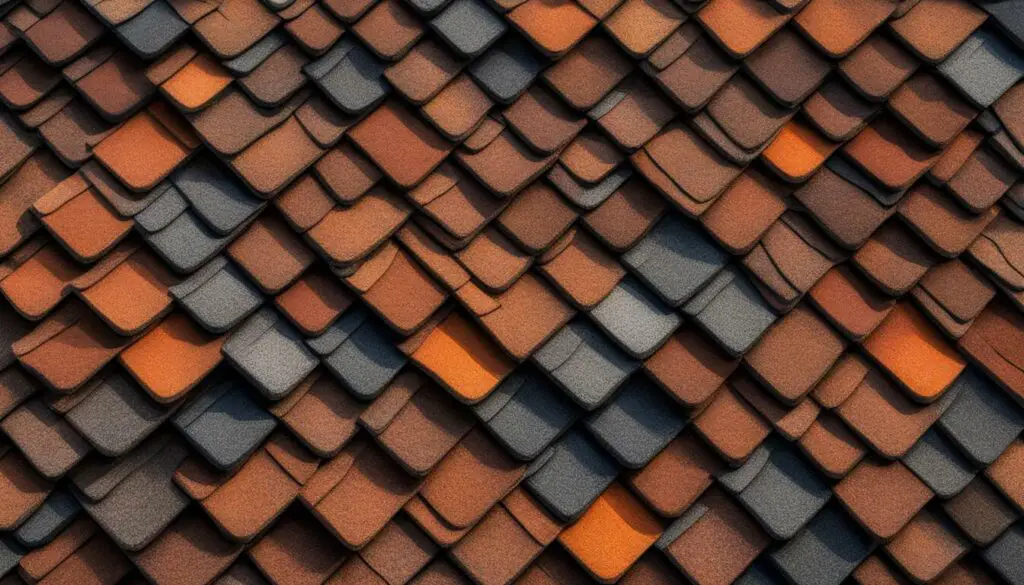
Asphalt Fiberglass Shingles
Asphalt fiberglass shingles are similar to organic asphalt shingles in appearance, but they have a fiberglass mat at their core. The fiberglass mat makes them more durable and resistant to fire. They also contain more asphalt than organic shingles, making them heavier and more stable in high winds.
Architectural asphalt fiberglass shingles are available in a variety of color blends, giving your home a unique look. They can also withstand extreme weather conditions and provide excellent insulation, making them an energy-efficient option for your roof.
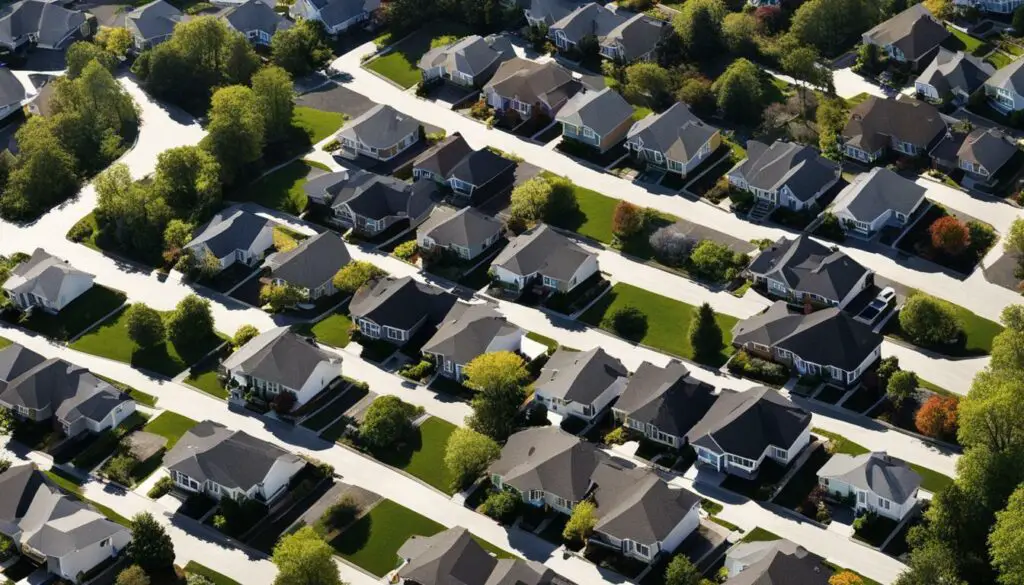
Wood Shingles & Shakes
If you’re looking for a natural, rustic appearance for your roof, wood shingles and shakes may be the perfect choice for your dream home. They are made from various types of wood, including cedar, redwood, and pine. While shingles are sawn and have a smooth, uniform appearance, shakes are split by hand and have a rougher texture. Both are available in different grades, with the higher grades offering better quality and longer lifespan.
One of the advantages of wood shingles and shakes is their natural insulation properties, which can help reduce energy consumption and lower utility bills. The variety of colors and textures also provides a unique, personalized look for your home.
| Type of Wood Shingles | Description |
|---|---|
| Natural Cedar Shingles | Made from cedarwood, which is naturally resistant to decay and insects. They are available in different grades, with clear being the highest quality. |
| Red Cedar Shingles | Made from Western red cedar, which has a reddish-brown color. They are also resistant to decay and insects. |
| Pine Shingles | Made from Southern yellow pine, which has a lighter color. They are less expensive than other wood shingles but have a shorter lifespan. |
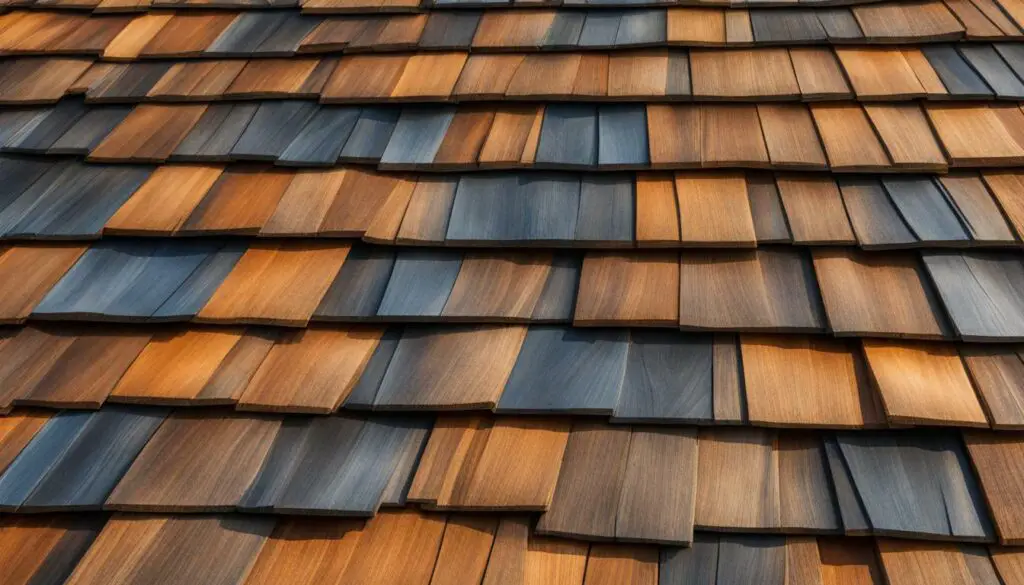
When it comes to installation, wood shingles, and shakes require careful attention to detail to ensure proper ventilation and prevent moisture buildup. They also require regular maintenance, such as cleaning and treating for mold and mildew.
Overall, wood shingles and shakes offer a unique, nature-inspired look for your dream home. By choosing the right type of wood and maintenance, you can ensure their beauty and longevity for years to come.
Clay & Concrete Tile Roofing
Clay and concrete tile roofing are two of the most popular roofing options due to their beauty, durability, and longevity.
Clay tiles have been used for thousands of years and have a timeless look that can add value to any home. There are different types of clay tiles, including Spanish, Italian, French, and mission tiles, each with its unique design and color. These tiles are usually more expensive than many other roofing options, but their durability and beauty make them a worthwhile investment.
Concrete tiles are a more affordable alternative to clay tiles, but they can still give your home a classic, elegant look. They are available in various colors, shapes, and styles, such as flat tiles, low-profile tiles, and high-profile tiles. Concrete tiles are also incredibly durable and require minimal maintenance.
Both clay and concrete tiles can be designed to replicate the look of other roofing materials, such as wood shakes or slate. They are also ideal for use in warmer climates as they reflect heat and help keep your home cool.
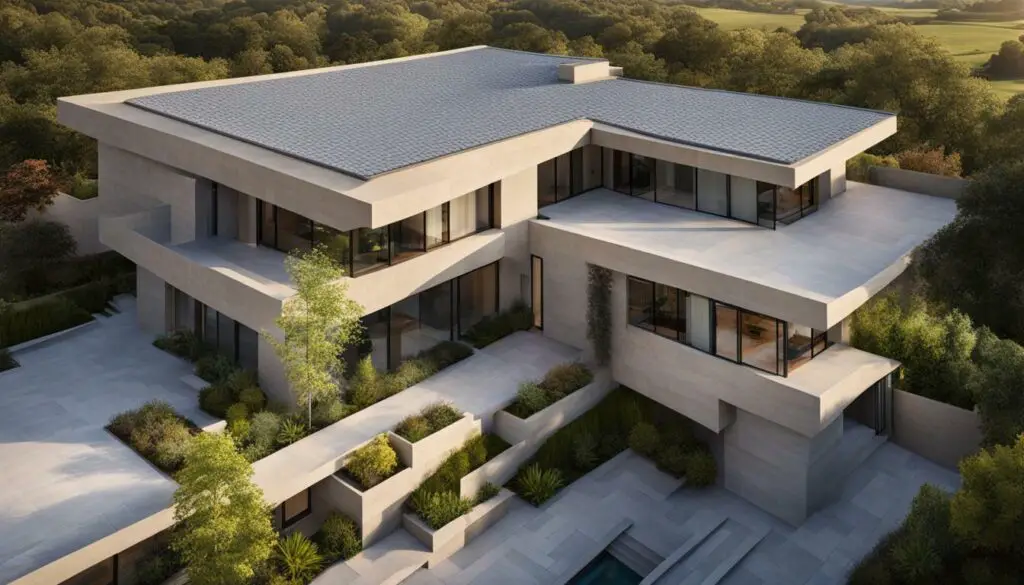
When it comes to choosing between clay and concrete tiles, it depends on your personal preference and budget. Clay tiles are more expensive, but they can last for up to 100 years, while concrete tiles have a lifespan of around 50 years.
It’s essential to have your clay or concrete tile roof installed by a professional to ensure proper installation and avoid any potential leaks or damage.
Rubber Roofing: Durable & Energy-Efficient
Rubber roofing is a popular option for homeowners due to its durability and energy efficiency. It is made from synthetic materials that are designed to mimic the look of traditional roofing materials, such as slate or wood, and can come in a variety of colors and styles.
There are two main types of rubber roofing:
| Type of Rubber Roofing | Description | Picture |
|---|---|---|
| Ethylene Propylene Diene Monomer (EPDM) | EPDM is a durable and long-lasting material that is resistant to UV rays and extreme temperatures. It is also lightweight and easy to install, making it a popular choice for flat roofs. |
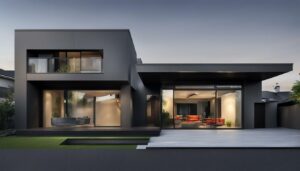 |
| Thermoplastic Olefin (TPO) | TPO is a newer type of rubber roofing that combines the durability of EPDM with the energy efficiency of white roofing. It is also resistant to UV rays and can help reduce cooling costs in warmer climates. |
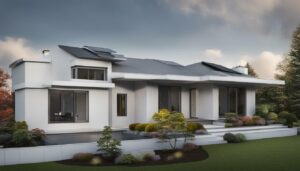 |
When choosing a rubber roofing material, it is important to consider factors such as cost, durability, and energy efficiency. A professional roofing contractor can help guide you through the process and find the best option for your home.
Composite Roofing
Composite roofing offers a combination of durability and aesthetics, making it a popular choice for homeowners. Made from a mixture of materials such as asphalt, recycled rubber, and plastic, composite roofing comes in different shapes and sizes to fit any style of home.
One of the main advantages of composite roofing is its durability. It can withstand harsh weather conditions such as rain, hail, and heavy winds. Composite roofs also have a longer lifespan compared to traditional roofing materials, reducing the need for frequent repairs and replacements.
Composite roofing comes in various types, including synthetic slate, shake, and shingle. Synthetic slate offers the luxurious look of natural slate but with the added benefit of being lightweight and easy to install. Synthetic shakes and shingles mimic the appearance of wood without its maintenance needs, such as sealing and staining.
Composite roofing can also be designed to look like other materials, such as clay tiles or metal roofs. This allows homeowners to achieve a specific look without the high cost or maintenance needs of traditional materials.
| Type of Composite Roofing | Description | Picture |
|---|---|---|
| Synthetic Slate Roofing | Mimics the look of natural slate but is more lightweight and easier to install. |
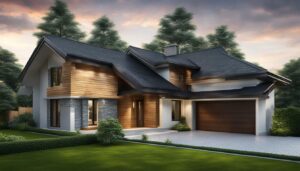 |
| Synthetic Shake Roofing | Mimics the appearance of wood shake but without its maintenance needs. |
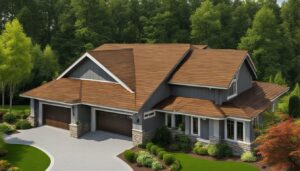 |
| Synthetic Shingle Roofing | Mimics the appearance of traditional shingles but with added durability. |
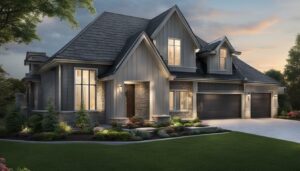 |
Composite roofing is a low-maintenance and cost-effective choice for homeowners who want the look of traditional roofing materials without their high costs and maintenance needs. With its durability and aesthetic appeal, composite roofing can last for decades while enhancing the beauty and protection of your home.
Metal Roofing: Durable and Long-Lasting Protection for Your Home
Metal roofing is a popular choice for homeowners due to its excellent durability and longevity. Metal roofs can last for 50 to 100 years, much longer than traditional asphalt roofs. They are also energy-efficient, reflecting heat and reducing cooling costs in the summer.
There are various types of metal roofs available, including:
| Type | Description | Picture |
|---|---|---|
| Standing Seam Metal Roofing | This type of roof has raised seams that interlock to create a sleek, modern look. It is commonly used on commercial buildings but is becoming increasingly popular for residential homes. |
 |
| Ribbed Metal Roofing | This type of metal roofing has ribs or grooves that run vertically down the roof. It is a cost-effective option and suitable for various styles of homes. |
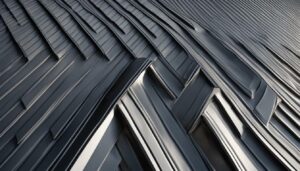 |
| Metal Shingle Roofing | Instead of traditional individual shingles, metal shingle roofing is made of interlocking panels that mimic the look of traditional shingles. They come in various colors and textures. |
 |
Other types of metal roofing include metal tiles, copper roofing, and aluminum roofing. Each type has its own unique characteristics and benefits.
When choosing a metal roof, it is essential to consider the style, color, and texture to ensure that it complements your home’s architectural style. It is also recommended to hire a professional roofing contractor to ensure proper installation and avoid any potential issues down the road.
Overall, metal roofing is an excellent option for homeowners looking for long-lasting protection and energy efficiency. With proper maintenance, your metal roof can last for many decades and add value to your home.
Corrugated Roofing
Corrugated roofing is a popular roofing option for its affordability, durability, and ease of installation. Made from metal or plastic, corrugated roofing is available in a range of colors and styles, making it suitable for various architectural designs. These roofs consist of a wavy pattern that gives them a unique appearance. They are lightweight, making them a great option for homes with weak or older roofs.
There are different types of corrugated roofs, including:
| Roof Type | Description |
|---|---|
| Steel Roofing | Made from galvanized steel or aluminum, these roofs are incredibly durable and long-lasting. |
| PVC Roofing | These roofs are made from plastic that is lightweight and easy to install, making them perfect for DIY projects. |
| Polyester Roofing | These roofs are made from a mixture of polyester and fiberglass, which makes them lightweight, durable, and affordable. |
Here is an example of what a corrugated roof looks like:
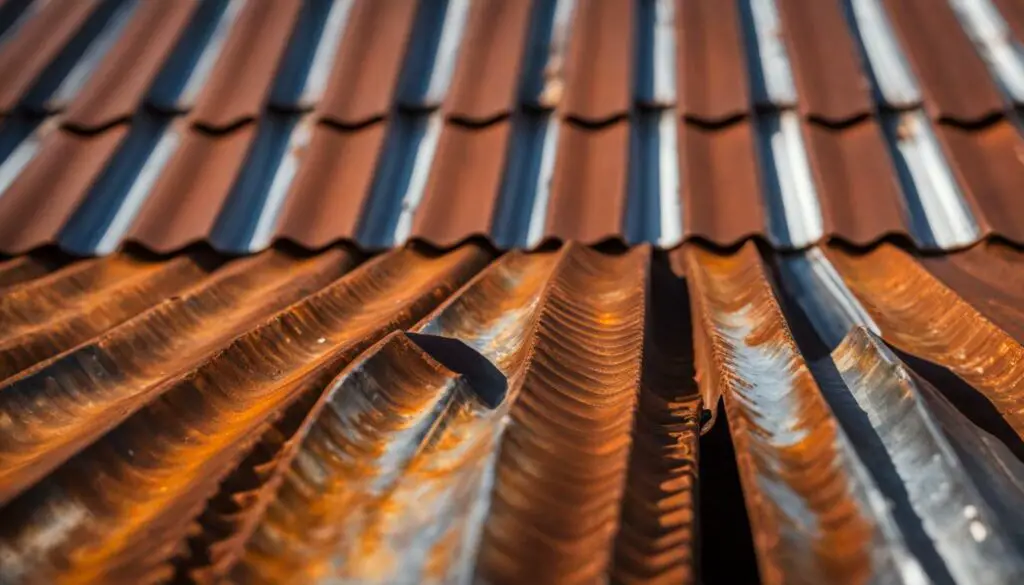
Corrugated roofing is a great option for those looking for a cost-effective and durable roofing solution. Whether you choose a steel, PVC, or polyester roof, corrugated roofing is sure to enhance the beauty and protection of your home.
Flat Roofing
Flat roofing is a popular choice for modern and contemporary homes. This style of roofing offers a sleek, minimalist look that complements many architectural designs. Flat roofs are also suitable for commercial buildings and industrial structures. Here are some of the most common types of flat roofs:
| Type | Description |
|---|---|
| Built-Up Roofing (BUR) | BUR is made of multiple layers of tar and gravel, providing excellent durability and insulation. This type of flat roofing is easy to repair but can be heavy and require regular maintenance. |
| Modified Bitumen Roofing | Modified bitumen roofing is a single-ply membrane that is easy to install and offers great flexibility and energy efficiency. It is also resistant to wear and tear. |
| PVC Roofing | PVC roofing is a single-ply membrane that provides great durability and resistance to UV rays, weather changes, and chemicals. It is also easy to install and maintain. |
| TPO Roofing | TPO roofing is a single-ply membrane that is eco-friendly and resistant to water, UV rays, and punctures. It is also highly durable and energy-efficient. |
Flat roofing has many advantages, including low maintenance, durability, and cost-effectiveness. However, it also requires proper insulation and drainage to prevent water damage and leaks. With the right materials and installation, flat roofing can provide a stylish and functional solution for your home or business.
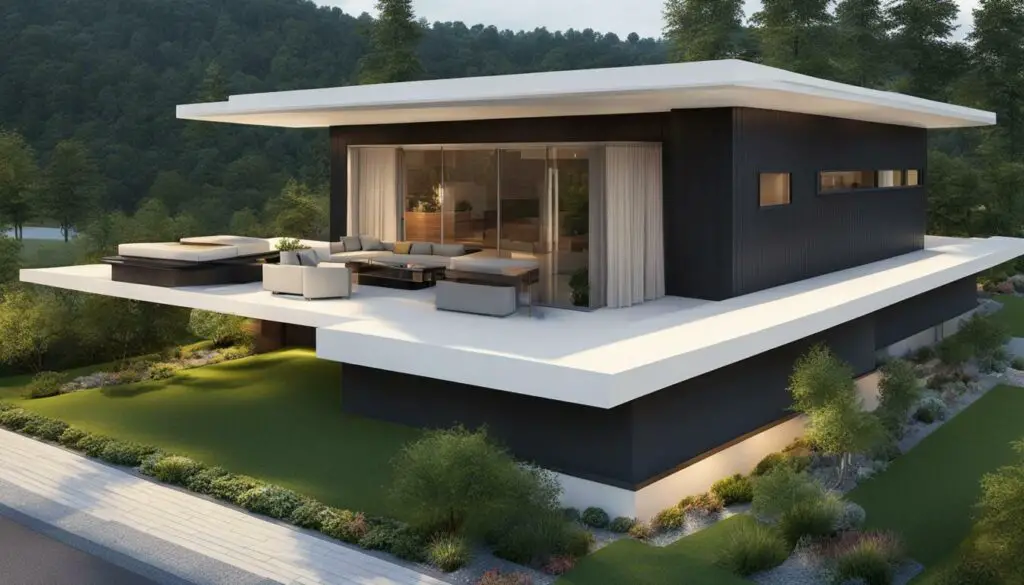
Slate Roofing
Slate roofing is a classic and elegant option for homeowners who desire a high-quality roof. Made from natural stone, slate tiles are available in various colors and sizes, giving homeowners the flexibility to create a unique look for their home.
One of the main advantages of slate roofing is its durability. When properly installed and maintained, a slate roof can last for over a century. It is also fire-resistant and can withstand extreme weather conditions, making it a great choice for areas with harsh climates.
There are two types of slate roofs: standard and graduated. Standard slate roofs consist of tiles of uniform size and thickness, while graduated slate roofs feature tiles of varying lengths and widths, creating a more textured appearance.
When considering slate roofing, it is important to note that it is a heavy material and may require additional structural support. It is also one of the more expensive roofing options, but the longevity and aesthetic appeal make it a worthwhile investment.
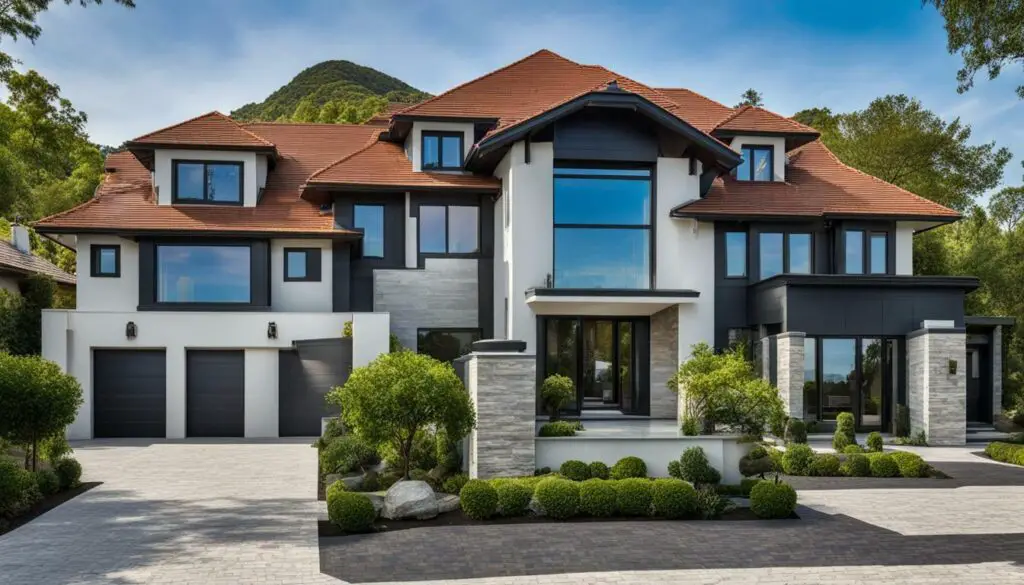
In summary, slate roofing is a durable and elegant option for homeowners who desire a long-lasting, high-quality roof. With its natural beauty and longevity, slate roofing is a great investment in both the aesthetic appeal and value of your home.
Solar Shingles & Solar Roofs – Harnessing the Power of the Sun
Solar shingles and solar roofs offer homeowners a sustainable and cost-effective energy solution. Instead of traditional roof materials, solar shingles are integrated into the roof design, capturing the sun’s energy and converting it into electricity. Solar roofs, on the other hand, are roofing systems made entirely of solar panels, providing even more energy production.
There are different types of solar shingles, including:
| Type | Description |
|---|---|
| Thin-Film Solar Shingles | Thin-film solar shingles are flexible and lightweight, making them easy to install. They are ideal for curved or complex roof designs. However, they can be less efficient than other types of solar shingles. |
| CIGS Solar Shingles | Copper indium gallium selenide (CIGS) solar shingles are more efficient than thin-film shingles and can blend in well with traditional roofing materials. They are durable and resistant to weather conditions. |
| Monocrystalline Silicon Solar Shingles | Monocrystalline silicon solar shingles offer the highest efficiency rating and can generate more electricity than other types of solar shingles. However, they are more expensive. |
Solar roofs are also becoming increasingly popular, providing a roofing solution that is entirely sustainable and energy-efficient. They are constructed using solar panels that cover the entire roof. Solar roofs offer numerous benefits, including:
- Reduced energy consumption and cost savings
- Increased home value and curb appeal
- Reduced carbon footprint and environmental impact
When considering solar shingles or solar roofs for your home, it is important to consider factors such as the amount of available sunlight, the size of your roof, and your energy consumption needs. Consult with a reputable roofing contractor who can help you determine if solar shingles or solar roofs are the right choice for your specific needs.
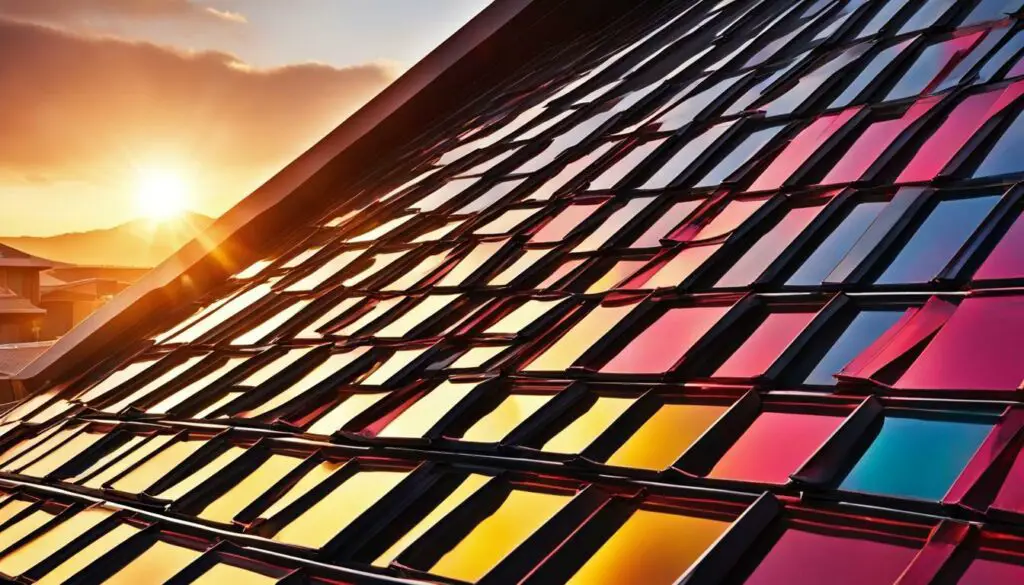
Energy-Efficient Shingles
If you’re looking to reduce energy consumption and cut down on utility bills, energy-efficient shingles might be the perfect solution. These shingles are designed to reflect more sunlight and heat away from your home, keeping the interior cooler and reducing the need for air conditioning.
There are several types of energy-efficient shingles available on the market, each with its own specific features and benefits. One option is solar-reflective shingles, which use reflective particles to deflect sunlight and reduce heat absorption. Another option is cool shingles, which are designed to reflect more of the sun’s energy and emit less heat.
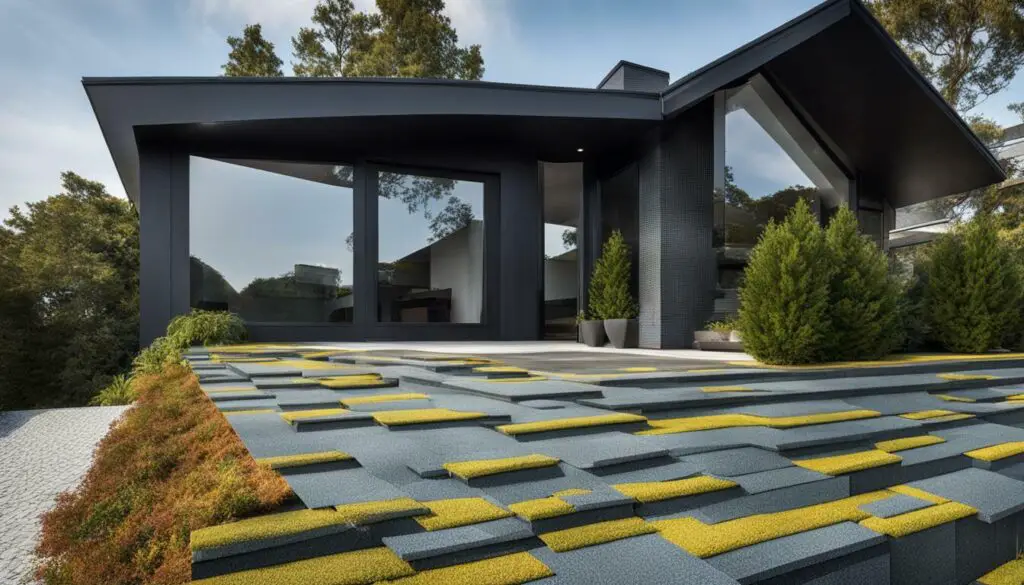
Both types of shingles are available in a range of colors and styles to suit your home’s aesthetics. Some manufacturers even offer energy-efficient shingles that are certified by ENERGY STAR®, guaranteeing their effectiveness in reducing energy consumption.
When considering energy-efficient shingles, it’s important to weigh the upfront cost against the long-term savings. While these shingles may have a higher initial cost, the potential savings in utility bills over time can make them a worthwhile investment.
Different Roof Styles
There are various roof styles to consider when choosing a roof for your dream home. Each style has unique characteristics that add to the overall appearance and functionality of your home. Here are some of the most popular roof styles:
| Roof Style | Description |
|---|---|
| Butterfly Roof | This roof style features two roof surfaces that slope downward towards the middle, giving the appearance of butterfly wings. This style provides ample natural light and is ideal for modern and eco-friendly homes. |
| Bonnet Roof | The bonnet roof features two slopes, with the lower slope being steeper than the upper slope. This style is ideal for homes in areas with high rainfall as it provides good water runoff. |
| Clerestory Roof | The clerestory roof features a row of windows placed high on the roof. This style allows for natural light to enter the home and provides good ventilation. |
| Combination Roof | This roof style combines two or more roof styles, creating a unique and attractive appearance. It is ideal for larger homes and can provide additional living space in the attic area. |
| Gable Roof | The gable roof is a simple and popular style that features two slopes that meet at a ridge or peak. This style provides good ventilation and easy water runoff. |
| Cross Gabled Roof | The cross-gabled roof features two gable roofs that intersect each other at right angles, resulting in a cross shape. This style is ideal for larger homes and provides additional living space in the attic area. |
| Cross Hipped Roof | The cross-hipped roof is similar to the cross-gabled roof but features a hipped roof instead of a gable roof. This style is ideal for homes in areas prone to high winds or hurricanes as it provides better stability. |
| Curved Roof | The curved roof features a gentle curve that adds to the aesthetic appeal of the home. This style is ideal for modern and contemporary homes. |
| Dome Roof | The dome roof is a unique and striking style that features a curved shape resembling a dome. This style is ideal for larger homes and can provide additional living space in the attic area. |
| Dormer | A dormer is a small roof structure that projects out from the main roof. This style adds architectural interest to the home and provides additional natural light and ventilation. |
| Dutch Gable Roof | The Dutch gable roof features a gable roof with a small hip roof attached. This style provides a classic and elegant appearance. |
| Flat Roof | The flat roof is a simple and modern style that features a completely flat roof surface. This style is ideal for modern and contemporary homes and can provide additional living space on the roof. |
| Front Gable | The front gable roof features a gable roof that is placed at the front of the home. This style provides an attractive and classic appearance. |
| Gable Roof with Shed Roof Addition | This style features a gable roof with a shed roof attached to one side. This style is ideal for homes with an attached garage or carport. |
| Gambrel Roof | The gambrel roof features two slopes on each side, with the lower slope being steeper than the upper slope. This style provides additional living space in the attic area and is ideal for homes with large families. |
| Half Hipped Roof | The half-hipped roof features a gable roof with two sides that are partially hipped. This style is ideal for homes in areas with high winds. |
| Hexagonal Gazebo Roof | The hexagonal gazebo roof features a six-sided roof structure that is ideal for outdoor living spaces, such as gazebos or patio covers. |
| Hip and Valley Roof | The hip and valley roof features multiple roof surfaces that meet at valleys and hips, creating a unique and attractive appearance. This style is ideal for larger homes and can provide additional living space in the attic area. |
| Jerkinhead Roof | The jerkinhead roof features a gable roof with a small hip roof attached. This style is ideal for homes in areas with high winds or hurricanes. |
| Mansard Roof | The mansard roof features two slopes on each side, with the lower slope being steeper than the upper slope. This style is ideal for homes with large families and can provide additional living space in the attic area. |
| M-Shaped Roof | The M-shaped roof is similar to the gambrel roof but features two gable roofs on each side. This style is ideal for larger homes and can provide additional living space in the attic area. |
| Open Gable Roof | The open gable roof features a gable roof with no walls or vertical ends. This style is ideal for outdoor living spaces, such as pergolas or carports. |
| Parapet Roof | The parapet roof is a flat roof with a wall that goes around the perimeter of the roof. This style provides additional protection from the elements. |
| Pyramid Hip Roof | The pyramid hip roof features four equal sides that meet at a peak, creating a pyramid shape. This style is ideal for smaller homes and provides good stability and water runoff. |
| Saltbox Roof | The saltbox roof features two slopes, with one side being significantly longer than the other. This style is ideal for homes in areas with high winds or hurricanes. |
| Shed Roof or Skillion | The shed roof or skillion roof features a single-sloping roof surface. This style is ideal for smaller homes and can provide additional living space in the attic area. |
| Simple Hip Roof | The simple hip roof features four equal sides that slope downward towards the walls, creating a simple and attractive appearance. This style is ideal for smaller homes. |
| Skillion and Lean To Roof | This style features a flat roof with a sloping roof attached to one side. This style is ideal for homes with attached garages or carports. |
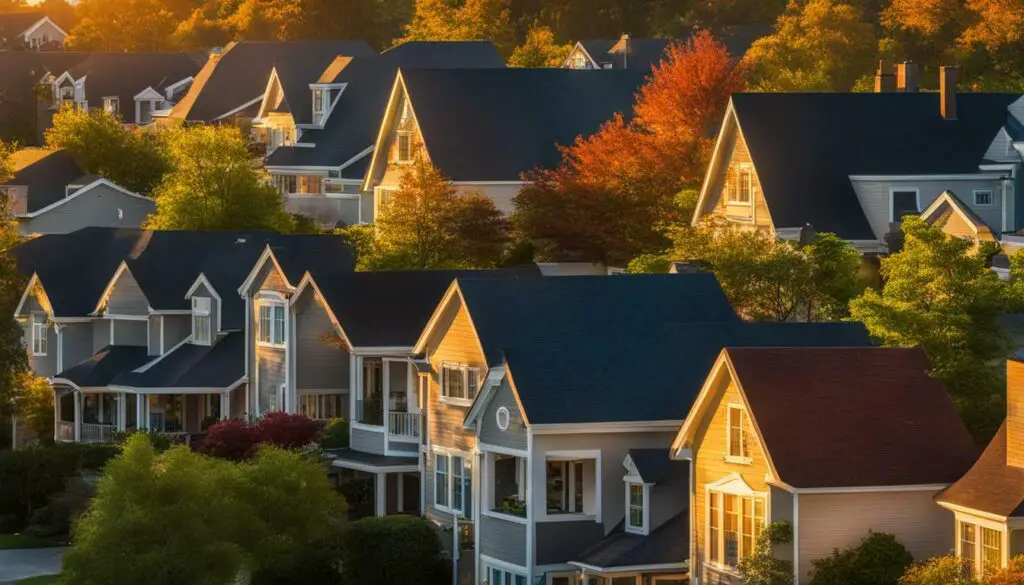
Whether you choose a gable roof, gambrel roof, or any other style, remember that each style has unique features to consider. Factors such as climate, aesthetics, and functionality should be considered before making your final decision. Take your time and choose the roof style that best suits your needs and preferences.
Conclusion
Choosing the right roof for your dream home can be a daunting task, but by considering the various factors such as aesthetics, durability, and cost, you can make an informed decision. We have discussed different types of roofs and roof materials suitable for your specific needs.
From asphalt shingles and wood shingles to clay tiles, rubber roofing, metal roofing, and composite roofing, there are plenty of options to choose from. Each type has its own unique benefits and characteristics, allowing you to pick the best one that suits your preferences.
It is equally important to consider the roof style, as it can enhance the overall appearance of your home. We have explored various roof styles, including butterfly roofs, bonnet roofs, clerestory roofs, combination roofs, gable roofs, cross-gabled roofs, and many more.
Make an Informed Decision
Ultimately, choosing the right type of roof comes down to your personal preferences and budget. By carefully considering the pros and cons of each option, you can make an informed decision that will provide long-lasting protection and enhance the beauty of your home for years to come.
So, whether you opt for the rustic charm of wood shingles or the energy efficiency of solar shingles, be sure to choose a trusted roofing contractor who can professionally install the roof of your choice.
Happy Learning
Also, Read,

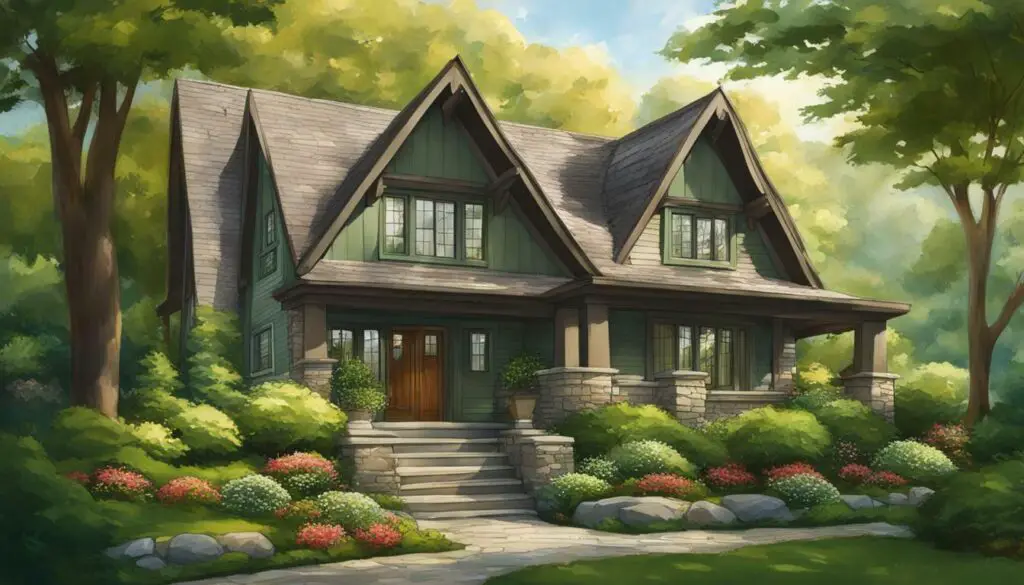
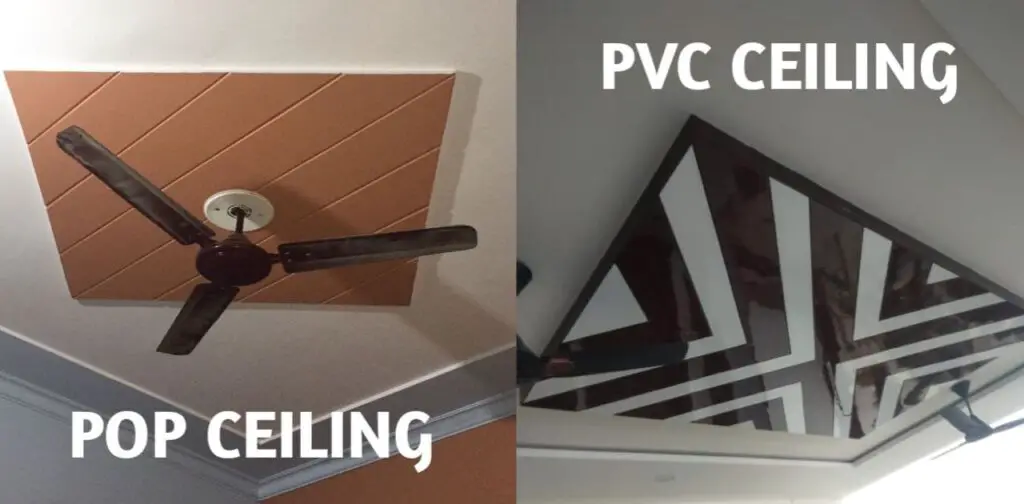
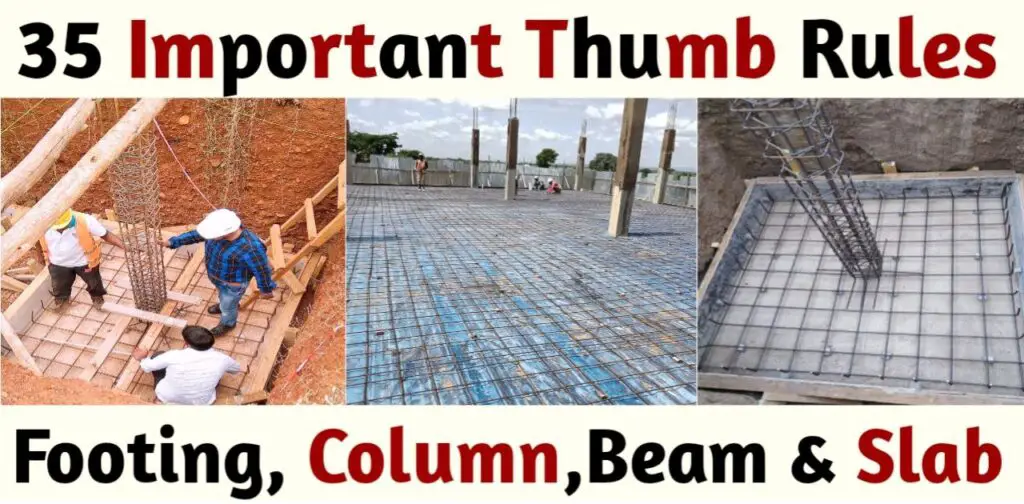
It’s best to take part in a contest for top-of-the-line blogs on the web. I will suggest this website!
Thanks for all of the labor on this site. My mother take interest in conducting research and it’s simple to grasp why. Many of us hear all regarding the lively mode you deliver great items on the website and as well as attract participation from others on the matter then my princess is in fact becoming educated a lot. Take advantage of the rest of the new year. You have been carrying out a remarkable job.
Magnificent goods from you, man. I have understand your stuff previous to and you are just extremely fantastic. I really like what you’ve acquired here, really like what you’re saying and the way in which you say it. You make it enjoyable and you still care for to keep it smart. I can not wait to read much more from you. This is actually a wonderful web site.
This website does not display appropriately on my blackberry – you might wanna try and repair that
Excellent. Thanks sharing. I enjoyed your article quite a lot while reading. Many thanks for sharing.
We are a group of volunteers and opening a new scheme in our community. Your site provided us with valuable information to work on. You’ve done a formidable job and our entire community will be thankful to you.
It is really a great and helpful piece of information. I’m glad that you shared this helpful info with us. Please keep us informed like this. Thank you for sharing.
Aw, this is a really good post. In thought I have to put in place writing in this way moreover – spending time and actual effort to create a top notch article… but exactly what do I say… I procrastinate alot and by no means apparently get something done.
It’s rare knowledgeable men and women for this topic, but you be understood as what happens you’re referring to! Thanks
Great story it is definitely. My girlfriend has been awaiting for this information.
I just done mine and that i was looking for several design suggestions and you afflicted me with a few.
Aw, i thought this was an incredibly nice post. In notion I have to place in writing in this way moreover – spending time and actual effort to create a very good article… but exactly what can I say… I procrastinate alot and also by no means apparently go accomplished.
I am not very excellent with English but I find this really easygoing to interpret .
informatii interesante si utile postate pe blogul dumneavoastra. dar ca si o paranteza , ce parere aveti de cazarea in regim hotelier ?.
Thank you for sharing with us, I believe this website really stands out : D.
Hello. Very nice web site!! Guy .. Beautiful .. Wonderful .. I will bookmark your site and take the feeds also…I am glad to locate numerous helpful information right here in the post. Thanks for sharing..
Hi, I just found your weblog via google. Your viewpoint is truly relevant to my life at this moment, and I’m really pleased I discovered your website.
There are some attention-grabbing closing dates in this article however I don’t know if I see all of them heart to heart. There is some validity but I’ll take maintain opinion until I look into it further. Good article , thanks and we would like extra! Added to FeedBurner as nicely
pretty useful stuff, overall I consider this is really worth a bookmark, thanks
Designing small verandas in highland areas demands a meticulous approach to making the most of space, considering the unusual struggles presented by the alpine terrain. The process encompasses numerous approaches, varying from the picking of space-efficient furniture to the integration of dual-purpose elements, all targeted at enhancing the capability of limited areas. Engaging in conversations that examine particular design ideas, innovative organizational solutions, and discussing individual triumphs transforms into a spring of motivation for community participants seeking to maximize their compact deck spaces amidst the unique landscapes of alpine environments.
Selecting compact furniture remains a basic facet of designing compact decks, permitting individual persons to make the most of the accessible area without sacrificing on functionality or aesthetics. integrating dual-purpose elements moreover enhances the versatility of little deck spaces, offering functional solutions that cater to varied needs. These strategies jointly contribute to a comprehensive approach that takes into account both the aesthetic appeal and practicality of tiny decks in mountainous parts.
Participating in talks that explore specific design plans turns into a trigger for creativity, providing a stage for people to exchange innovative notions and resolutions tailored to mountainous environments. The dialogue includes creative storage options, addressing the challenge of limited space with functional and aesthetically pleasing methods to organization. Private success stories shared within the society turn into useful narratives, illustrating the practicality and capacity of optimizing small deck spaces in the unique context of highland places.
With this collaborative return, forum members gain helpful insights and a riches of notions to apply to their own little deck projects, making sure that every single inch of space is carefully used in creating practical, attractive, and effective backyard living areas in mountainous spaces.
It was helpful to learn that asphalt fiberglass shingles are known to be similar to organic asphalt shingles in appearance except they have fiberglass mats at their core, which is what makes them more durable, resistant to fire, and more stable in high winds. I need a new roof for my house in Milwaukee soon since the one I have now is already quite old and dilapidated, so I’m not sure it can hold on for much longer. I’ll take note of this while I call a roofing company in Milwaukee to hire for the new roof installation I need this March.
But yeah Many thanks for taking the time to discuss this, I feel strongly about it and really like learning more on this topic. If possible, as you gain expertise, would you mind updating your blog with more information? It is extremely helpful for me.
Hello! Wonderful post! Please when I could see a follow up!
you employ a fantastic blog here! do you want to cook some invite posts in my blog?
I am getting my house in Loveland renovated this spring, so I wanted to get a new roof for it as well to replace the old one since it’s already quite dilapidated because of its age. It’s great that you recommended considering slate roofing since it is a durable and elegant option that’ll give us both the natural beauty and longevity we want for our home since it can withstand extreme weather conditions without much problem. I’ll take note of this while I look for a residential roofing company in Loveland to contact about the new roof I need for my home renovation project soon.
i am new roofing contractor in Detroit. This article helped me a lot. Thanks!!!
It’s good that you recommended that we consider slate roofing for our house if we want something classic and elegant since it is made from natural stone and can last for over a century if maintained well. I am getting my house in Erie remodeled this spring, so I need a new roof for it as well to replace our old dilapidated one. I’ll keep this in mind while I look for a residential roofing company in Erie to contact for the new installation soon.